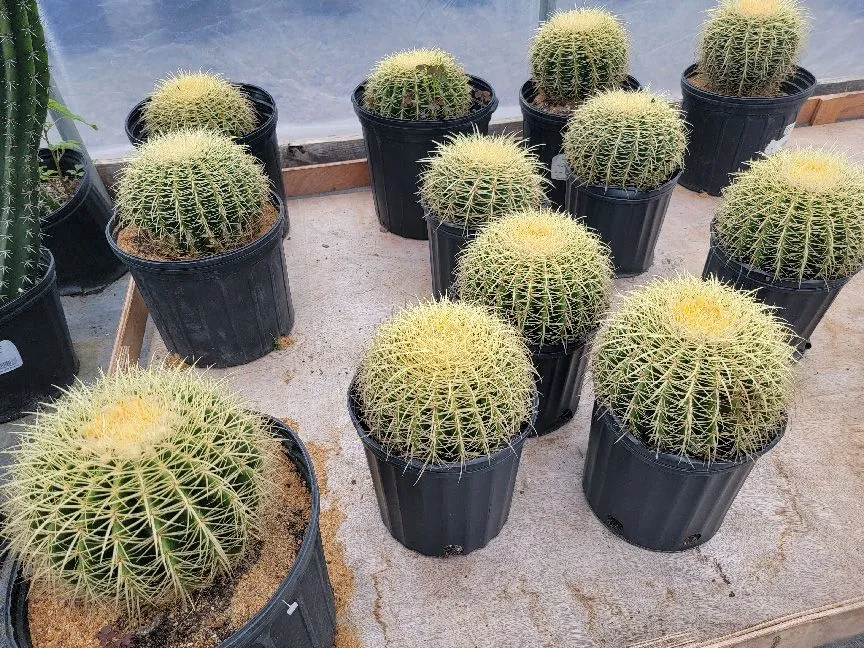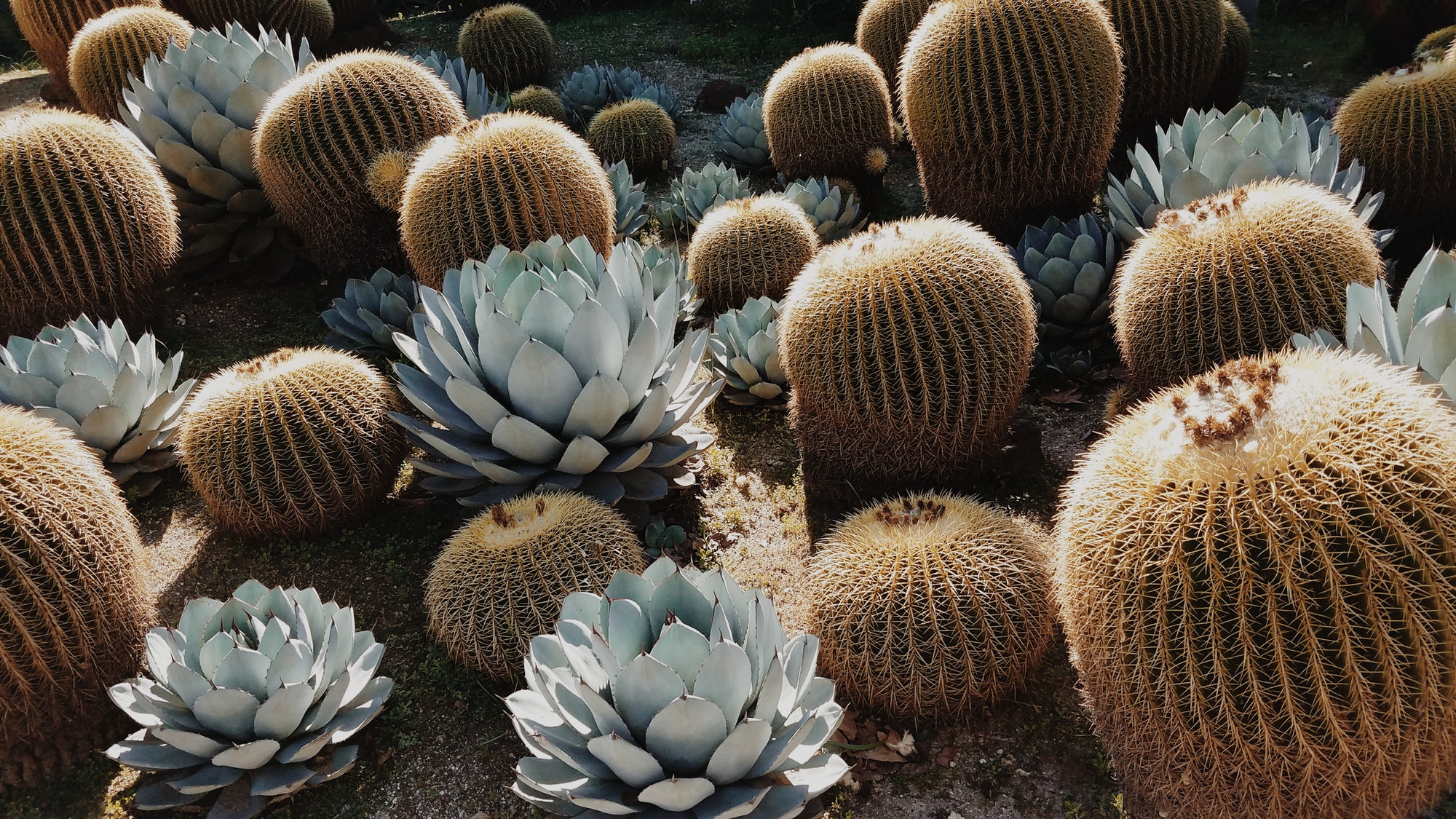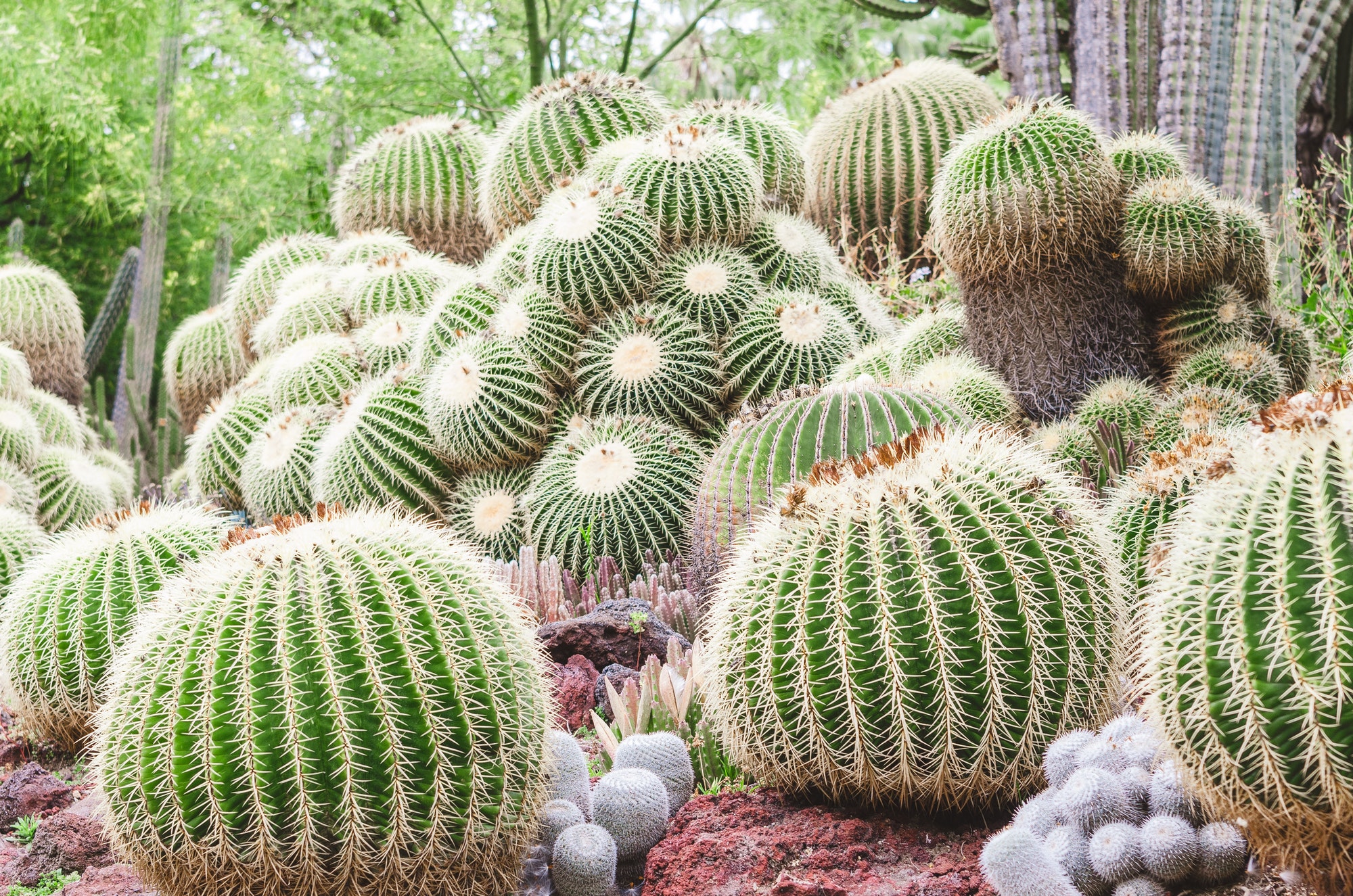Plant Information
Peruvian Cereus Cactus
The Peruvian cereus cactus, also known as the Peruvian apple cactus, is native to South America, particularly Peru and surrounding regions. It belongs to the Cereus genus and is characterized by its columnar growth habit, ribbed stems, and large nocturnal flowers. This cactus species thrives in arid and semiarid regions, often growing in rocky or sandy soils.
Saguaro Cactus
The saguaro cactus is an iconic symbol of the American Southwest, primarily found in the Sonoran Desert of Arizona and parts of California and Mexico. Scientifically known as Carnegiea gigantea, it is renowned for its towering stature, with some individuals reaching heights of up to 40 feet (12 meters). Saguaro cacti provide critical habitat for various desert wildlife and play a vital role in the ecosystem.
Golden Barrel Cactus
The golden barrel cactus, scientifically named Echinocactus grusonii, is native to the arid regions of central Mexico. This cactus species is prized for its striking spherical shape and distinctive golden-yellow spines, which give it a unique appearance. Golden barrel cacti are drought-tolerant and prefer well-draining soil in full sun exposure, making them popular choices for xeriscape gardens and desert landscapes.
Looking To Purchase?
Need Help?
Visit Us
South Mills, NC 27976
Call Us

Explore the rugged beauty of desert landscapes with our diverse collection of desert plants. From towering saguaro cacti to elegant yuccas and resilient succulents, each plant offers its own unique charm and adapts effortlessly to the harsh conditions of arid environments. Admire the striking architectural features of desert sotol and golden barrel cacti, or marvel at the delicate blooms of cereus peruvianus cactus under the moonlit sky. With their ability to thrive in low-water conditions and withstand extreme temperatures, these desert plants are not only stunning additions to your landscape but also valuable contributors to desert ecosystems. Whether you’re creating a desert oasis or adding a touch of Southwest flair to your garden, our selection of desert plants will inspire and delight.
Planting Desert Plants
Planting desert cacti like Peruvian cereus, saguaro, golden barrel, and desert sotol requires careful consideration of timing and soil conditions. In regions with mild winters, planting timing is less critical, but ensuring adequate watering during the establishment phase is essential. For areas with hot climates and mild winters, fall planting is optimal, while in colder regions, spring planting is preferred. Well-drained soil is crucial to prevent root rot, particularly for cacti sensitive to excessive moisture. Raised beds with sand, crushed bricks, and gravel can aid in drainage, allowing cacti to thrive even in humid climates outside their native habitats.
Transplanting cacti is relatively straightforward, usually involving digging a new hole and replanting. Attention should be paid to sunlight exposure, especially in sunnier locations than before, to prevent sunburn during the first year. Adding stones or rocks around the base of cacti can help retain moisture and reduce stress during hot summers. Regular maintenance, such as removing fallen debris, is essential to prevent infection and ensure the plant’s health. When it comes to watering, desert cacti thrive with infrequent but deep soakings, typically about twice a month, depending on the plant type, light exposure, and temperature. By following these planting and care techniques, you can enjoy thriving desert cacti in your landscape year-round.
Usage of Desert Plants:
- Drought Tolerance
- Low Maintenance
- Unique Aesthetic
- Wildlife Habitat
- Adaptability
- Longevity

Desert Plants Benefits

Care & Maintenance
Are desert plants suitable for indoor cultivation?
While some desert plants, such as certain types of cacti, can be grown indoors under specific conditions, they generally thrive in outdoor environments with ample sunlight and good airflow. Indoor cultivation requires adequate lighting and proper soil drainage to mimic their natural habitat.
How often do desert plants need to be watered?
Desert plants are adapted to survive in arid conditions and typically require infrequent watering. It's essential to allow the soil to dry out completely between waterings to prevent root rot and other moisture-related issues. Depending on factors like climate and soil composition, watering frequency may vary but generally ranges from once every few weeks to once a month.
Do desert plants require special soil or fertilizer?
Desert plants thrive in well-draining soil that mimics the sandy or rocky substrates of their native habitats. Using a cactus or succulent mix enriched with perlite or sand can provide the necessary drainage. Fertilization is minimal for desert plants, and they generally do not require regular feeding. If fertilizing, use a diluted, low-nitrogen fertilizer sparingly during the growing season.

